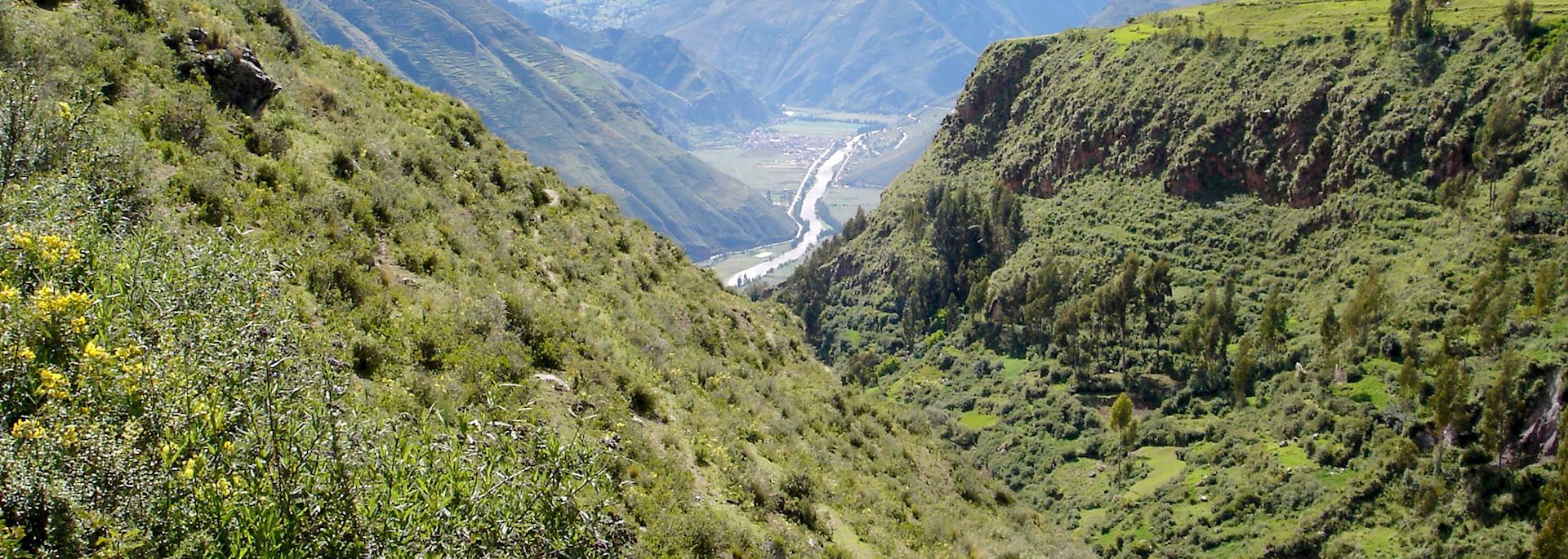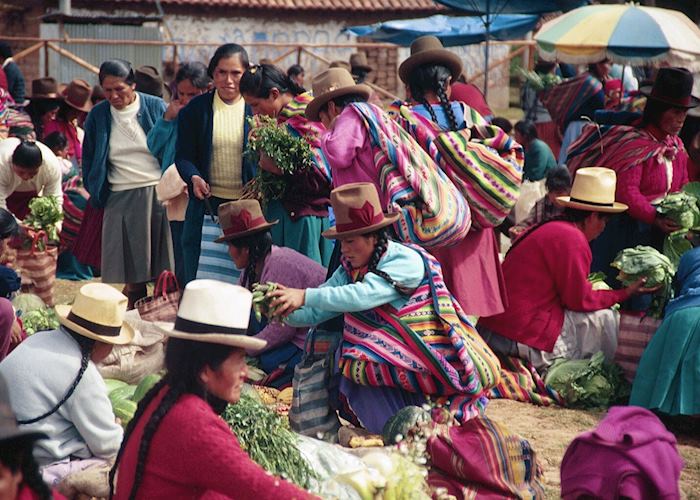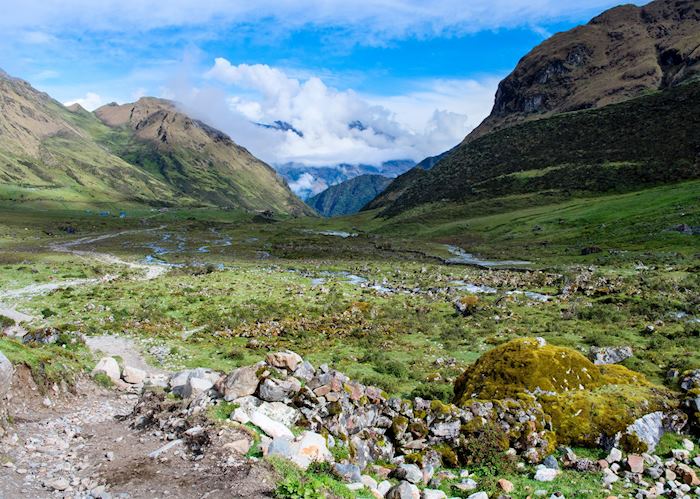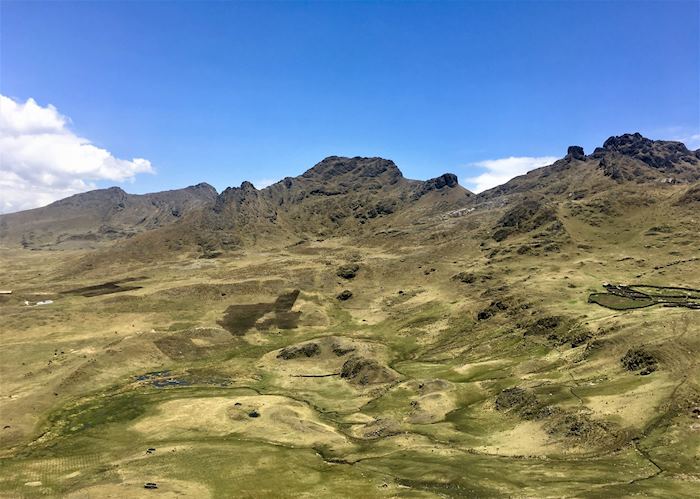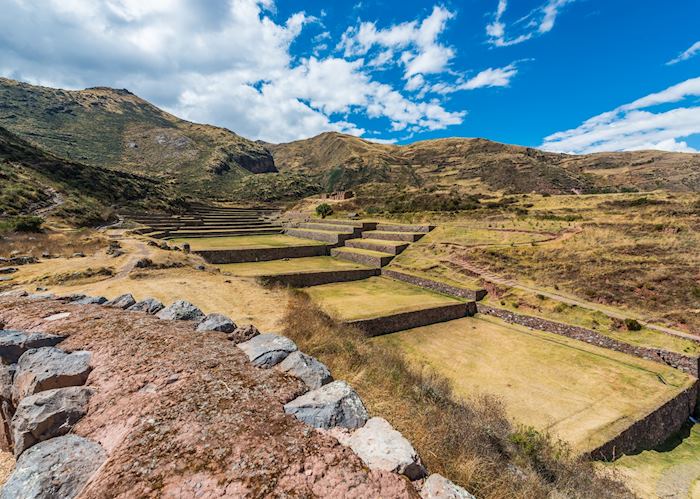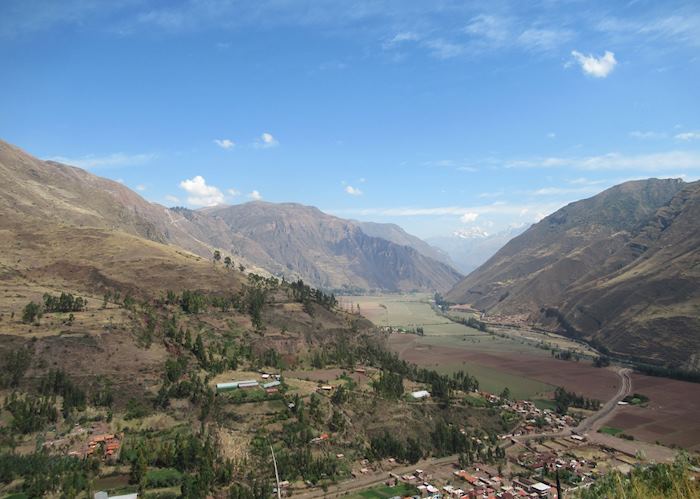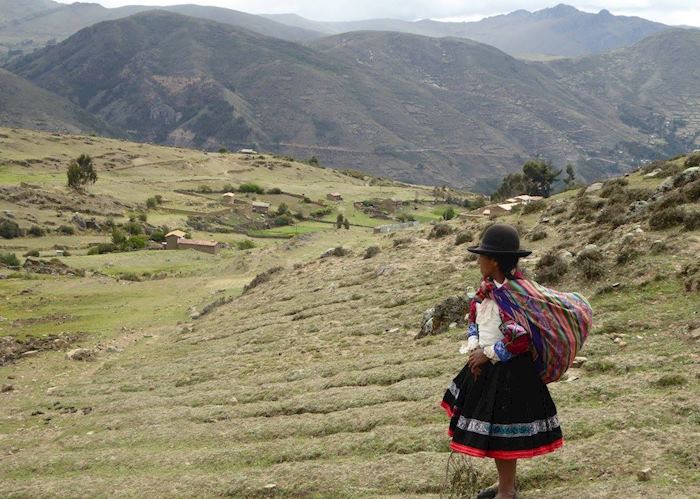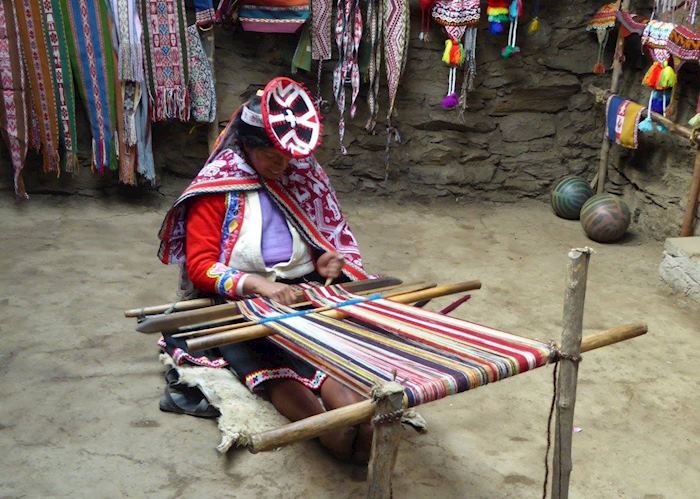The Sacred Valley is a fertile corridor that follows a winding course just northwest of Cuzco all the way to Machu Picchu. Often considered the spiritual and commercial heart of the Inca Empire, it progresses into a slender alluvial plain where all kinds of crops and fruit trees flourish in the temperate valley floor climate. North of Ollantaytambo and onward to Machu Picchu, the valley becomes subtropical and the Urubamba River transforms into a swirling torrent, making further road access impossible. You can, however, continue to Machu Picchu on foot or by train.
 The valley is tightly hemmed in by great folds of the Andes, some stark and bald and some crowned by snow or glaciers. Weaving communities cling to the creases of the foothills, while ruined Inca citadels sit high on the mountainsides, as if keeping watch.
The valley is tightly hemmed in by great folds of the Andes, some stark and bald and some crowned by snow or glaciers. Weaving communities cling to the creases of the foothills, while ruined Inca citadels sit high on the mountainsides, as if keeping watch.
Many visitors think of the Sacred Valley as a transit point between Cuzco and Machu Picchu. But, if you can spare the time, there’s a welter of activities and points of interest here. You’ll find a glut of archaeological sites, one of Peru’s trend-setting restaurants, a range of treks beyond the Inca Trail and numerous adventure activities.
Písac, a town at the eastern mouth of the Sacred Valley, is popular with visitors, who flock to its artisan craft market. Among its handmade wares are silky-soft baby alpaca shawls and scarves. (If Peruvian textiles particularly interest you, we recommend visiting the non-profit weaving cooperative of Awamaki).
Písac then transmutes into a food and produce market on Sundays, where locals from surrounding villages join the throngs of out-of-towners.
Above all the busyness, Písac’s citadel and a sun temple stand on a mountain spur. These ruins display the precise stonework that’s become something of a patent for the Incas. You’ll also see astronomical observation posts and ceremonial baths fed by aqueducts.
Buried deeper into the mountains north of Cuzco, Chinchero is a Spanish colonial settlement that’s also celebrated for its Sunday-morning market. Quechua-speaking women wearing traditional manta shawls and patterned skirts seem to run the place, selling produce and craftwork. Quieter than Písac, Chinchero also bears some Inca remnants, such as a stone throne and terracing.
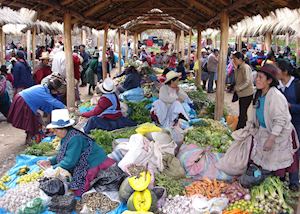 The town of Ollantaytambo has the valley’s gold-star fortress. It rears up like a granite titan at the end of the paved road between Cuzco and the Sacred Valley, dominating the town, which was once an important administrative hub for the Incas. Today its layout and remaining Inca walls give you the closest approximation of what an Inca town must have looked like five centuries ago.
The town of Ollantaytambo has the valley’s gold-star fortress. It rears up like a granite titan at the end of the paved road between Cuzco and the Sacred Valley, dominating the town, which was once an important administrative hub for the Incas. Today its layout and remaining Inca walls give you the closest approximation of what an Inca town must have looked like five centuries ago.
The Sacred Valley’s Inca ruins aren’t limited to fortresses. Moray is made up of three swirls of seven terraces burrowing into the earth like vortexes. They’re thought to have been a latter-day laboratory for growing crops in different microclimates. Peru specialist Fiona explains more about Moray’s allure and the lesser-known Inca sites of the Sacred Valley in her guide to Peru’s Inca wonders beyond Machu Picchu.
Nearby, you’ll find the still-in-use salt pans of Maras, and, overlooking Moray, one of the best restaurants in Peru ― Mil. The brainchild of chef Virgilio Martinez, owner of Central in Lima, it relies on purely local ingredients.
For a more rustic yet authentic Peruvian dining experience, you can dine on a traditional pachamanca (earth-oven) meal in the Sacred Valley. Peruvian food enthusiast Josh explains more about Mil and what a pachamanca involves in his guide to culinary Peru.
With its terrain varying from steep mountain slopes to flat fields of maize, the Sacred Valley is a good spot for mountain biking and horseback riding, no matter your ability. You can, alternatively, go white-water rafting along the surging Urubamba just past Ollantaytambo, or stand-up paddleboarding in calmer stretches of the river.
The Sacred Valley is your start point for the classic Inca Trail, but that’s not the only hiking route leading to Machu Picchu. There are several other options, most involving camping and taking a minimum of three days. We discuss some of the best routes in our guide to trekking to and around Machu Picchu. There’s even a day-walk option called KM 104: ideal if you’re short on time or don’t wish to undertake a multi-day trek.
Best time to visit Peru’s Sacred Valley
Plan your visit for between the months of April and October in order to swerve the Sacred Valley’s rainy season.
who's been there
Start planning your tailor-made trip to Sacred Valley by contacting one of our Peru specialists
-
01993 838 92501993 838 620
- Make an enquiry

